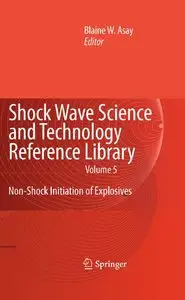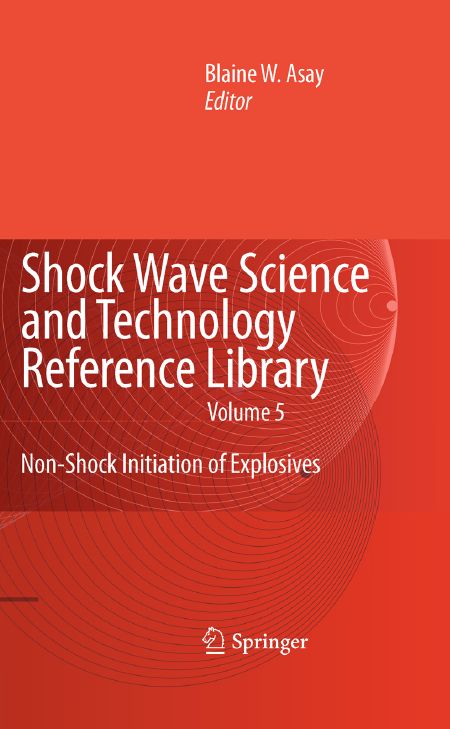Shock Wave Science and Technology Reference Library, Vol. 5: Non-Shock Initiation of Explosives by Blaine Asay
English | 2010-02-01 | ISBN: 3540879528 | 617 pages | PDF | 23,1 MB
English | 2010-02-01 | ISBN: 3540879528 | 617 pages | PDF | 23,1 MB
The sensitivity of an explosive is not a well defined property of the material but rather a complex pattern of behavior. Unlike the response to strong, planar shocks which is for the most part predictable and reproducible, explosives' response to multidimensional and weaker stimuli is much more complicated.
The present volume is the first compendium to assemble in a single text our present knowledge about the vast range of non-shock ignition mechanisms and responses, where initiation is not prompt, and involves a series of steps that may or may not lead to a steady detonation.
The 11 extensive chapters in this volume are: Context and Complexity of Non-Shock Initiation (B. W. Asay), Transport Phenomena for Non-Shock Initiation Processes (L. Perry), The Chemical Kinetics of Solid Thermal Explosions (B. F. Henson), Classical Theory of Thermal Criticality (L. G. Hill), Deflagration Phenomena in Energetic Materials (S. I. Jackson), Mechanical and Thermal Damage (G. R. Parker and P. J. Rae), Cook-off (B. W. Asay), The Deflagration-to-Detonation Transition (J. M. McAfee), Friction (P. M. Dickson), Impact and Shear Ignition by Non-Shock Mechanisms (J. E. Kennedy), Spark and Laser Ignition (J. E. Kennedy).
Each chapter is self-contained and can be read independently of the others, though, they are thematically interrelated. They offer a timely reference, for postgraduate students as well as professional scientists and engineers, by laying out the foundations and discussing the latest developments including yet unresolved challenging problems.



